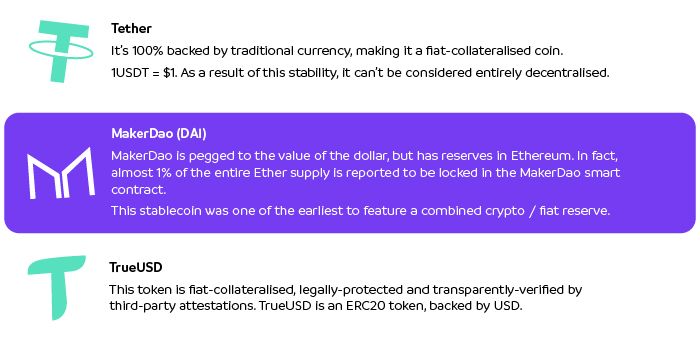To read the new version of this article, please use the following link.
Cryptocurrencies pegged to a stable asset (often a traditional currency), are known as stablecoins. These are considered the holy grail of crypto by some enthusiasts; however, the most common use case for stablecoins is as a liquidity tool for cryptocurrency exchanges. Many exchanges are denied access to traditional banking because banks are often wary of dealing with anything crypto-related for compliance reasons. Stablecoins are designed to combine crypto's ease of circulation with the stability of traditional currencies. They have been popular with investors who trade on exchanges that don't support traditional currencies, as they provide an option to store crypto without the associated price volatility. Reserve-backed stablecoins function a little like paper money used to when it was linked to the gold standard. Just as cash used to be backed by gold reserves in a central bank, reserve-backed stablecoins are backed one-for-one by reserves of the currencies they are pegged to. Issuers of coins like USDC or Tether "tokenize" dollars by exchanging them for a stablecoin and depositing the dollars in a bank. Those dollars are then left untouched until somebody redeems the stablecoin.
The big names
Forbes claimed that stablecoins would be the catalyst to the new decentralised internet becoming mainstream. The hype was understandable a major obstacle to the mainstream adoption of digital currencies is their volatility, an issue that stablecoins mitigate. However, in reality, this system doesnt always run as smoothly expected. There is a widespread misconception that stablecoins offer a similar level of stability to cash. This isnt the case and the two arent comparable. Whereas cash is a liquid asset and will always represent the exact value of the currency its backed by, stablecoins can and do fluctuate. "A currency should act as a medium of monetary value", asserts the finance education site Investopedia. Its value should remain relatively stable over time. Stablecoins don't fit this definition because the value of major coins has fluctuated wildly in the short time they've been available - and the debate about whether collateralised deposits equal the value of the stablecoins in circulation rages on. Like traditional banking, stablecoins rely heavily on the confidence of their potential users. This is key to attracting investment and maintaining value. Developers are aware of this. They often undertake measures to help boost viability, such as naming the bank their coin is attached to or undergoing regular security audits to prove that tokens are destroyed when funds are redeemed. As MITs Advisor for Blockchain Research, Michael J. Casey, asserts, the key to the success of a stablecoin is being able to convince a wide community of token holders of its future solvency. Here are three of the most popular stablecoins: If you havent already, download Wirex from the App Store or Google Play or follow us on Twitter, Facebook, Instagram or Telegram.
If you havent already, download Wirex from the App Store or Google Play or follow us on Twitter, Facebook, Instagram or Telegram.